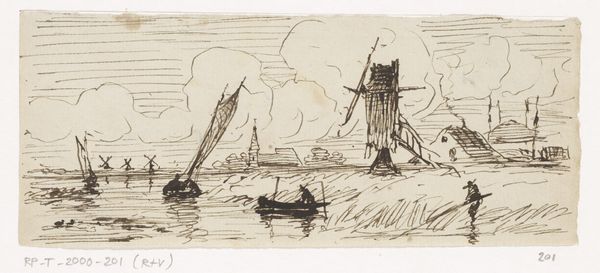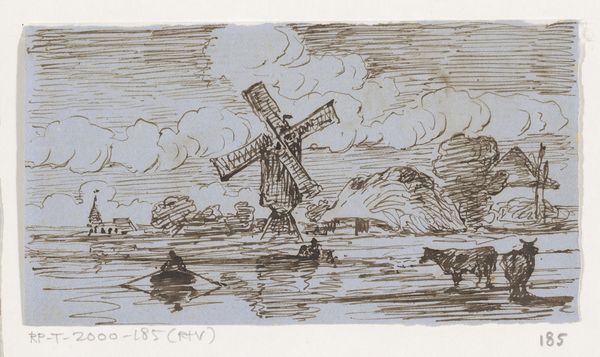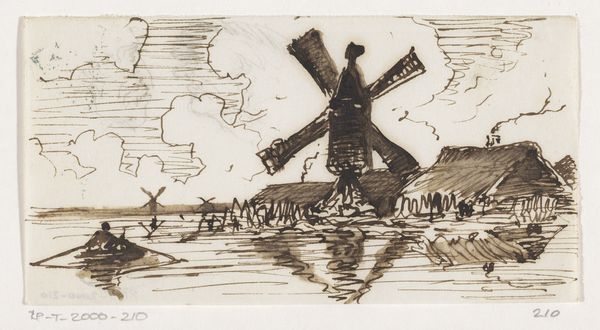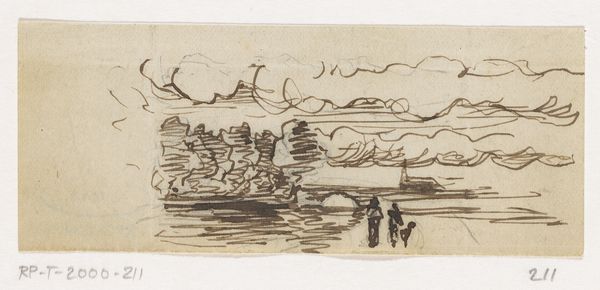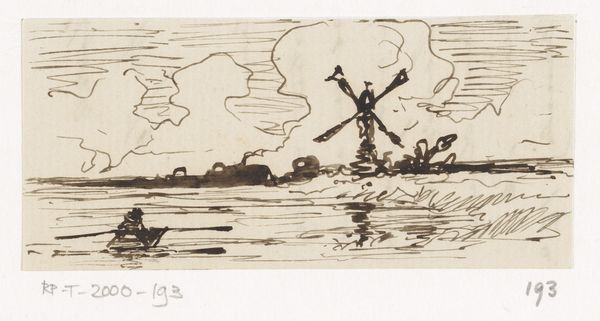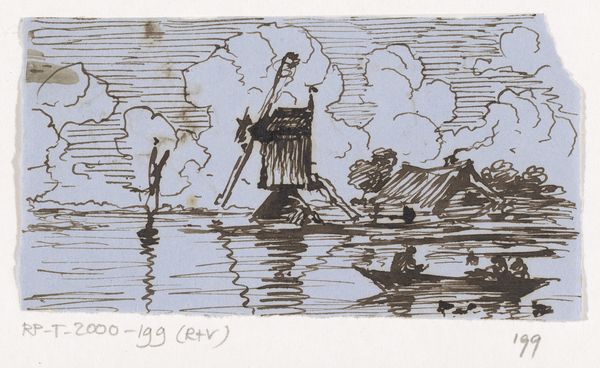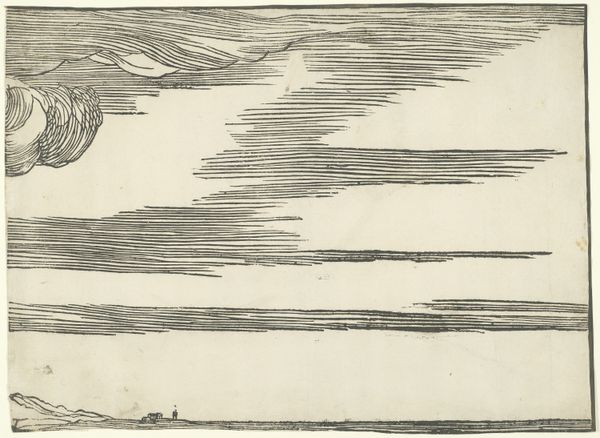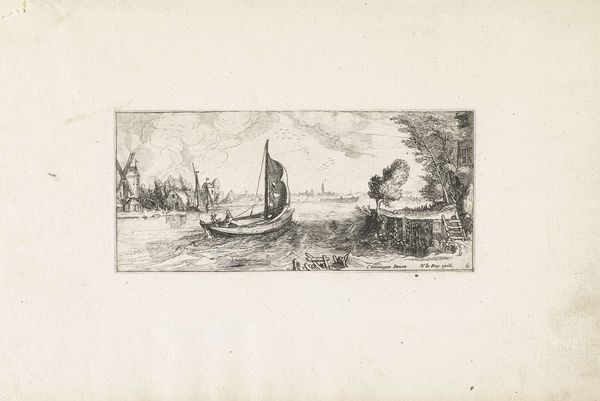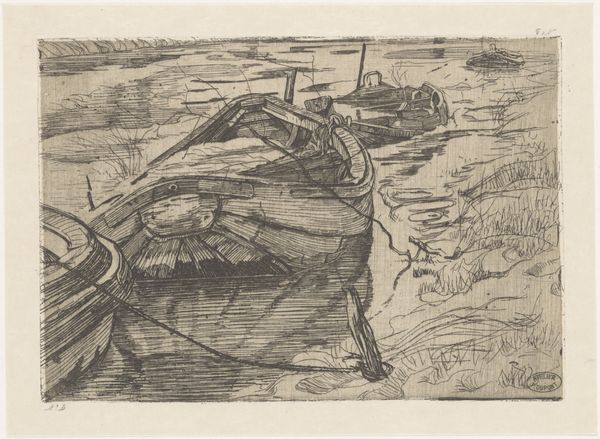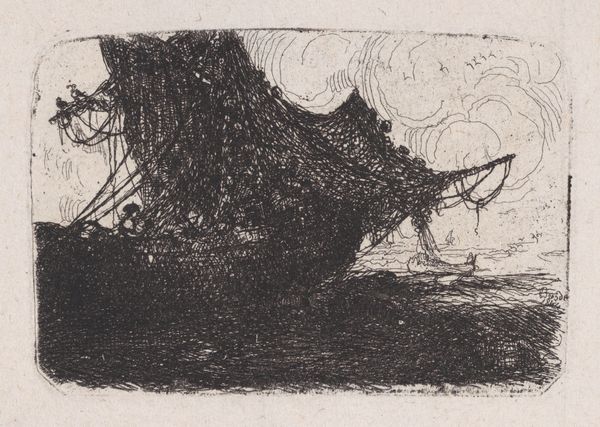
drawing, ink
#
drawing
#
ink drawing
#
pen sketch
#
landscape
#
etching
#
ink
#
realism
Dimensions: height 47 mm, width 103 mm
Copyright: Rijks Museum: Open Domain
Editor: Here we have "Rivierlandschap," or "Riverscape," a pen and ink drawing, dating from sometime between 1840 and 1880, by Johannes Tavenraat. The drawing has an energy to it – the lines feel almost frenetic. What strikes you about this piece? Curator: For me, this drawing is an encapsulation of nineteenth-century Dutch society. We see a river landscape dominated by the clear mark making from pen to page depicting a windmill. This was not simply a charming scene; the windmill represented industry, it was labor concretized into art. Note the lack of picturesque prettiness – it’s a working landscape, honestly represented. How do you think Tavenraat's choice of ink contributes to this representation? Editor: That’s interesting. I hadn't considered the practical implications of the scene itself. I suppose the starkness of the ink drawing, compared to, say, an oil painting, brings an immediacy and rawness. The windmill is clearly the central subject, maybe representing human attempts to work within and even harness nature for manufacturing, as part of the increasing Industrialisation of Europe. Curator: Exactly. Consider the accessibility of ink as a medium versus oil paints. Ink drawings democratized landscape art, bringing it out of the aristocratic salon and into the hands of a broader public. The means of production and distribution impacted the message. Do you think Tavenraat was conscious of this shift? Editor: It's hard to say definitively, but given the focus on everyday scenes and working landscapes, it suggests he was deliberately engaging with a wider audience and the materials available to this public, making commentary through his choice of subject matter and medium. I suppose I hadn't looked at it that way before. Curator: Reflecting on it all, it’s clear that the drawing, seemingly simple, becomes a lens through which we can examine the material realities and social shifts of its time. Editor: Definitely. It’s fascinating to see how considering the materials and production can change how we view art.
Comments
No comments
Be the first to comment and join the conversation on the ultimate creative platform.
